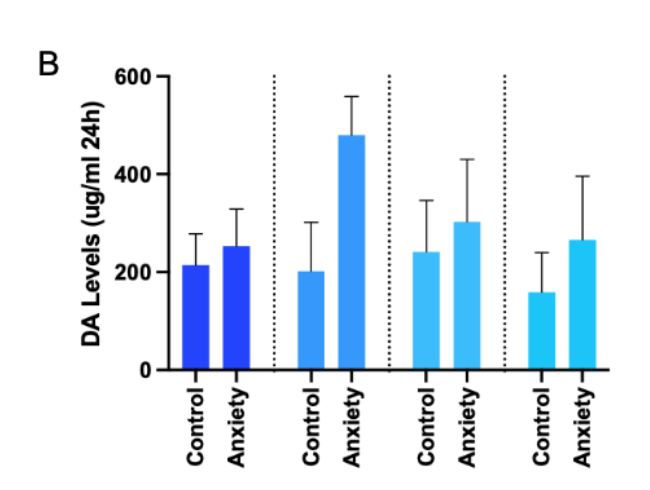Investigating Potential Linkage Between Catecholamines and Anxiety Diagnosis
DOI:
https://doi.org/10.58445/rars.13Keywords:
catecholamines, anxiety, biomarker, dopamine, norepinephrine, epinephrine, urinary analysis, plasma analysisAbstract
The prevalence of anxiety disorders as a devastating psychiatric disorder is exponentially rising in the modern general population. Unfortunately, precise data is difficult to obtain as individual responses on anxiety questionnaires vary drastically.
By analyzing catecholamines and their relevant biochemical pathways in anxiety disorders, a potential biomarker may be identified, possibly helping reduce variability and ensuring proper diagnosis. Abnormal catecholamine levels may be a strong indicator of anxiety: by investigating a potential correlation between anxiety and catecholamine levels, anxiety can be addressed at an earlier stage, allowing early intervention and preventing more severe symptoms.
Performing a meta-analysis of publicly accessible data, a direct correlation between catecholamine levels and anxiety disorder was found by analyzing pre-experiment baseline values and anxiety scores. ELISA analysis determined the quantitative measure of catecholamine in urinary and plasma analysis. With the provided sample sizes from the papers with pre-experiment measurements of catecholamine levels, the means and standard deviations of the pooled groups were compared using two-tailed unpaired t-tests, assuming Gaussian distribution with both populations sharing the same standard deviations. Then analyzing the data sets using GraphPad, statistical significance was found between the control and anxiety groups for both elevated dopamine and epinephrine levels. With further analysis of pooled data, using two-tailed paired t-tests assuming Gaussian distribution with consistent differences between paired values, a statistically significant elevation in the catecholamine levels in anxiety patients was further reinforced with urinary dopamine and plasma epinephrine data while a strong trend was observed in elevated urinary norepinephrine values as well.
Investigating a potential relationship is vital to ensuring that future diagnoses of anxiety are precise and consistent. Through a deeper understanding of these potential biomarkers and other potential comorbidities, there is hope to reduce the risk of suicidal ideation through early recognition and treatment of this crippling condition.


